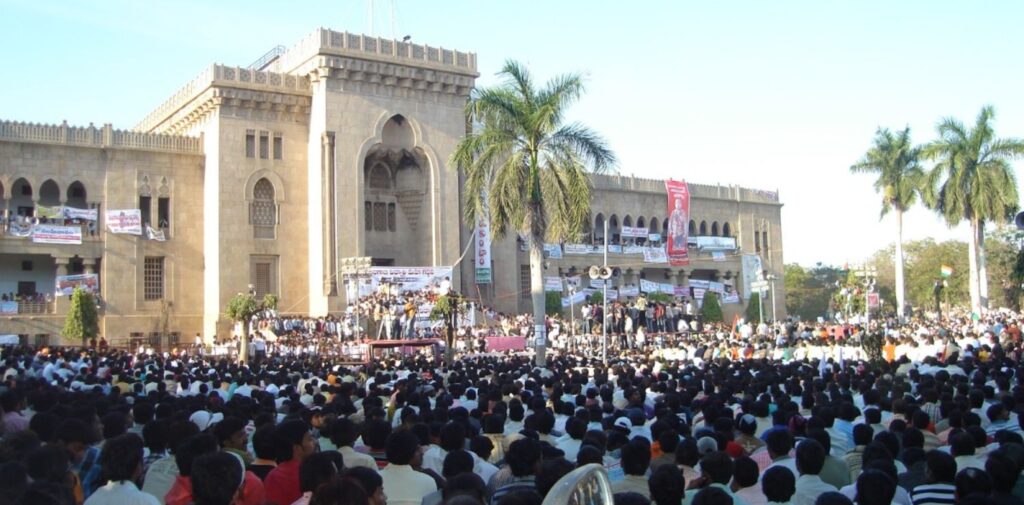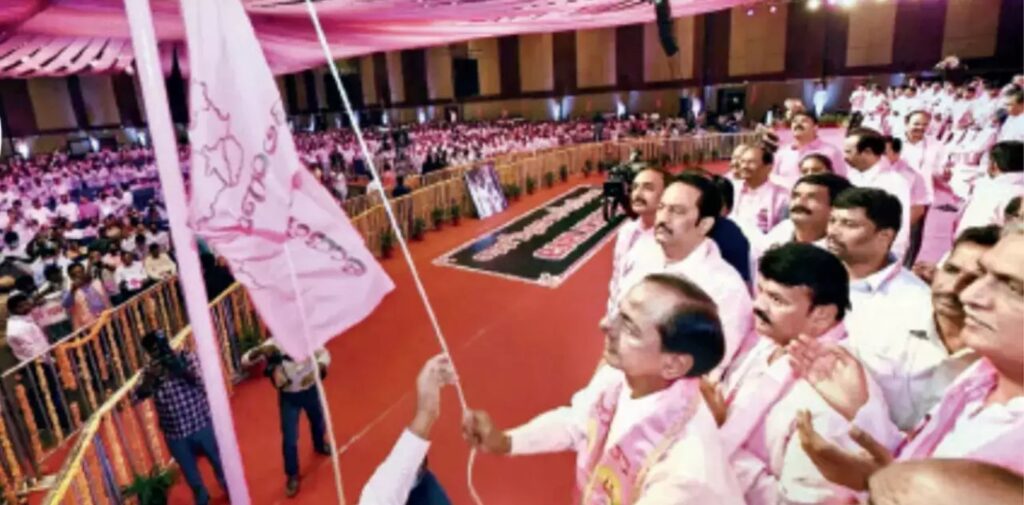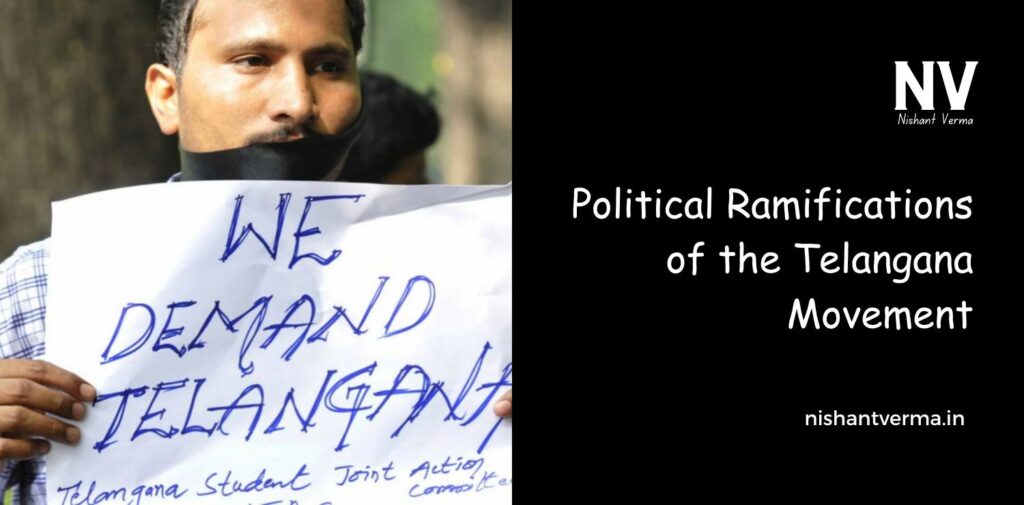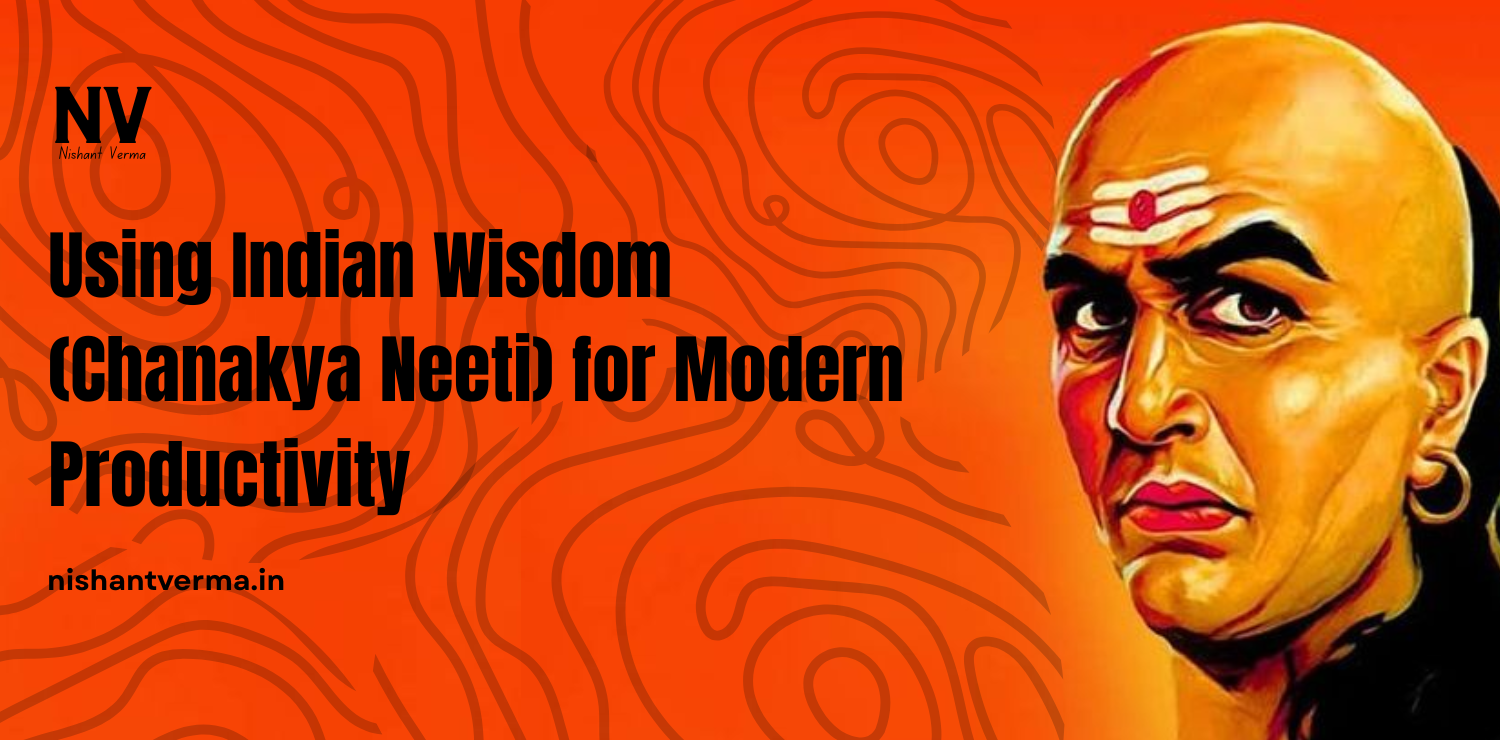India is a country that is diverse in many ways – from its culture, language, religion, to its politics. One important political event in India’s recent history was the Telangana Movement, which aimed for the creation of a separate state of Telangana. This movement had big political consequences, not just for the state itself, but for the whole country. In this article, we will look at what the Telangana Movement was, why it happened, and how it affected the politics of India.
What Was the Telangana Movement?
The Telangana Movement was a long struggle by the people of the Telangana region to form their own state, separate from the larger state of Andhra Pradesh. The movement started many years ago, but it gained serious attention in the 2000s. The people of Telangana felt that their region was not receiving enough resources, jobs, and development, and they wanted a state that would look after their interests more closely.
Telangana was originally a part of Hyderabad State, but after India’s independence in 1947, it was merged with the Andhra region to form Andhra Pradesh in 1956. The idea behind this merger was to unite the Telugu-speaking people in one state, but many people from Telangana felt that they were being treated unfairly. They believed that the resources of their region were being used to develop the areas in Andhra, leaving them behind.
The demand for a separate Telangana state grew over time, leading to protests, strikes, and political pressure. After years of struggle, the Indian government decided to create a new state of Telangana, which was officially formed on June 2, 2014.

Why Did the Telangana Movement Happen?
To understand the political consequences of the Telangana Movement, it is important to first know why it happened. There were several reasons that contributed to the demand for a separate state:
- Economic Disparities: The people of Telangana felt that their region was not getting enough resources for development. Andhra Pradesh had a lot of agricultural land and industries, but Telangana, despite being rich in natural resources, was not being developed at the same pace. Many believed that the wealth of Telangana was being used to develop other parts of Andhra Pradesh.
- Cultural Differences: Telangana and Andhra have many cultural differences. The people of Telangana speak Telugu, but their dialect and traditions are different from those in the Andhra region. Many Telangana people felt that their culture was not being fully respected and that the Andhra region dominated the cultural and political landscape.
- Political Representation: Many people in Telangana felt that they were not well represented in the government, both at the state and national level. They believed that political power was mostly in the hands of people from Andhra, and as a result, their needs were being ignored. The movement for a separate state was seen as a way to get more local political representation and decision-making power.
The Impact of the Telangana Movement on Indian Politics
The creation of Telangana as a separate state had major political consequences for India. Here are some of the important impacts:
New State, New Opportunities
The formation of Telangana as a new state meant that it now had its own government, laws, and policies that could focus on the specific needs of the people in the region. This gave the people of Telangana a sense of pride and empowerment, as they could now make decisions that directly affected their lives.
The government of Telangana promised to focus on issues such as education, healthcare, and infrastructure that were particularly important for the people of the region. With a new state, the people hoped that the economic and social development that had been lacking would now be prioritized.
Reorganization of Andhra Pradesh
The creation of Telangana also meant that Andhra Pradesh had to be reorganized. Andhra Pradesh lost a significant portion of its territory and resources when Telangana was carved out. This had a big impact on the political, economic, and social situation of the remaining Andhra Pradesh.
The division led to political challenges in Andhra Pradesh as well. Many people from the Andhra region felt upset about losing Telangana and the resources that came with it. The state had to face the challenges of rebuilding its economy, managing its resources, and ensuring that the people of the region were not left behind.

Impact on National Politics
The Telangana Movement had a big impact on national politics as well. The struggle for a separate state was supported by many political parties, but it was also opposed by others. Different political parties saw the Telangana issue from their own point of view, and this led to a lot of debates and discussions in the Indian Parliament.
One of the most important outcomes of the Telangana Movement was the role played by the Congress Party. The Congress-led government at the center agreed to create Telangana, but this decision caused a lot of internal tension within the party and its allies. Some leaders supported the creation of Telangana, while others were against it. This divide within the Congress Party created political instability, and many people began to question the effectiveness of the central government.
The Telangana Rashtra Samithi (TRS), a political party that was at the forefront of the movement, played a key role in the creation of the state. The TRS was able to gain a lot of support by pushing for the separate state of Telangana and became the ruling party in the new state. The rise of regional parties like the TRS showed that the demand for smaller, more focused states was growing in India, as people wanted their unique needs to be addressed.
A Shift Toward Regional Politics
The Telangana Movement highlighted the growing importance of regional politics in India. People were increasingly looking to vote for parties that focused on their region’s specific needs, rather than just supporting national political parties like the Congress or the BJP. This led to the rise of smaller political parties that were able to capture the local imagination and win elections based on regional issues.
The Telangana movement also led to the rise of other regional movements in India, where people in different parts of the country began to demand more autonomy and rights. In places like Bihar, Uttar Pradesh, and West Bengal, people started to question the effectiveness of a large, centralized government and began asking for more power to be given to state governments.
Impact on National Integrity
The creation of Telangana raised important questions about national unity and integrity. While many people supported the movement, others feared that the division of states could lead to more demands for smaller states across the country. Some critics worried that if every region with a distinct identity demanded a separate state, India could become fragmented.
However, the Indian government was able to manage the situation and ensured that the creation of Telangana did not lead to major unrest in other parts of the country. India’s commitment to a federal system of governance meant that different regions could have their own state governments while still being part of one strong nation.

Economic Consequences
The division of Andhra Pradesh into two states had significant economic consequences. Both Telangana and Andhra Pradesh needed to rebuild their economies after the division. Telangana, with its capital in Hyderabad, was considered economically stronger because Hyderabad was a hub for IT companies and other industries. Andhra Pradesh, however, had to work harder to find new sources of income and rebuild its infrastructure.
The economic adjustments were difficult for both states. Telangana had to ensure that it could continue to grow economically and provide jobs to its people, while Andhra Pradesh had to figure out how to maintain its development without the resources of Telangana. Both states had to negotiate new power-sharing arrangements and revenue divisions.
Conclusion
The Telangana Movement was a significant event in India’s political history. It highlighted the demands of people who felt left behind and wanted more control over their own resources and future. The creation of Telangana as a separate state changed the political landscape in India, with the rise of regional parties, shifting power dynamics, and new economic challenges.
The movement also raised important questions about national unity, the balance of power between state and central governments, and how India’s federal system could address regional demands. While the creation of Telangana brought relief to many in the region, it also set a precedent for other regions in India to consider their own demands for autonomy and development.
In the end, the Telangana Movement showed that India’s democracy is not just about national issues, but also about listening to the voices of people in different regions and ensuring that their needs are met.




